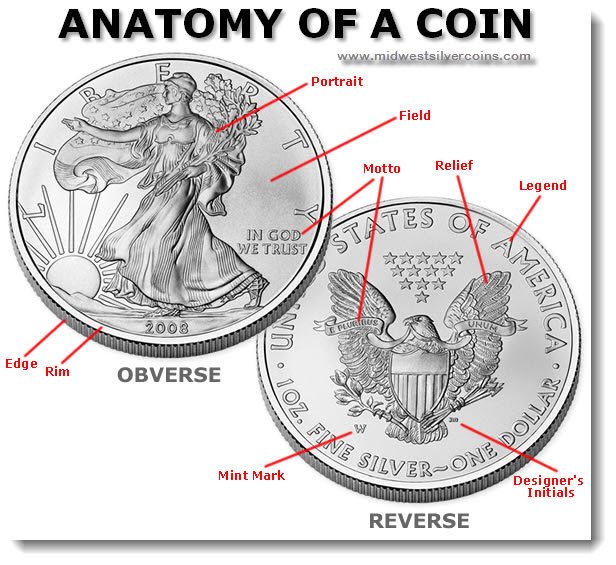Coin Anatomy

The coin shown above is an uncirculated dollar. Familiarity with the terms listed below, as well as the additional ones listed in our Glossary will help you to communicate better with other coin collectors.
Obverse: The front side (“heads”) of a coin. Generally, the side with the date and principal design (NOTE: the new 50 State Quarters® are a major exception because their date is on the reverse).
Reverse: The back side (“tails”) of a coin.
Edge: The outer border of a coin, considered the “third side” (not to be confused with “rim”). Edges can be plain, reeded, lettered or decorated. See examples below:




Rim: The raised edge on both sides of a coin (created by the upsetting mill) that helps protect the coin’s design from wear.
Legend: The principal inscription or lettering on a coin.
Mint mark: A small letter or symbol on a coin used to identify where a coin was made. Current United States mint marks are Philadelphia (P), Denver (D), San Francisco (S), and West Point (W).
Relief: The part of a coin’s design that is raised above the surface.
Field: The flat portion of a coin’s surface not used for design or inscription.